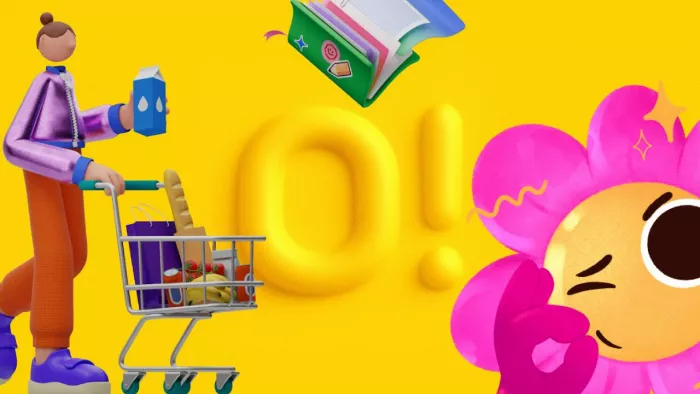Where Ouch Delivers Real Value in Production
Ouch solves a stubborn problem after wireframes are approved: shipping a single illustration voice that scales across onboarding, empty states, landing pages, social posts, and decks without turning into a stylistic patchwork. The useful bit is breadth with cohesion. Instead of one-offs, Ouch groups visuals into series with shared line weight, palette logic, perspective, and proportions. That coherence is what keeps UI from feeling assembled from multiple marketplaces.
Unlike open collections that rely on community uploads, Ouch curates and maintains standards across styles. Curation cuts brand risk, clarifies licensing, and keeps quality predictable. The tradeoff is that not everything is free and you must map the license to your use. If you want speed with consistent assets and minimal legal overhead, Ouch is a strong starting point.
Depth of Library and Style Systems
The catalog covers flat, outline, skeuomorphic, gradient heavy, 3D inspired, and isometric sets. The real test is how many states a style covers. Teams need not just a landing hero but also micro illustrations for errors, loading, security, or onboarding tasks. Stronger packs include repeatable character poses, device frames, and activity scenes that match common product narratives like signup, sync, privacy, payments, teamwork, education, shipping, and analytics.

Many packs are neutral enough for both B2B SaaS and consumer apps. Accents are easy to retint, which helps when brand teams scrutinize hue and saturation. You will find both geometric modern and hand drawn doodle voices, so a product line can pick a tone without leaving the ecosystem.
Search is tuned to product terms. Queries like empty state, onboarding, error, security, teamwork, or dashboard return relevant sets fast. That saves time in sprints.
File Formats, Editing, and Tooling
Ouch ships PNG and SVG. For responsive web and multi density mobile, SVG is the workhorse. It stays crisp, themes cleanly, and plays well with design tools and component libraries.
Two workflow details stand out:
- Colors are easy to tweak. Many vectors have sensible layer structure, so you can retint fills, hide bits, or swap accents. Dark mode, seasonal campaigns, and localization are quick edits.
- Integration is solid. Lunacy imports Ouch assets and runs on Windows, macOS, and Linux. Icons8 also offers plugins for tools like Figma that make browsing and insertion faster. Check your tool marketplace before you lock the workflow.
Add an optimization step for production. Even clean vectors can bloat bundles. Run SVGO in CI to strip metadata and simplify paths. With Next.js, Astro, or Vite, add SVGR and SVGO to generate components or inline SVG with tree shaking. For mobile, prefer pre optimized PNG exports where vector rendering is costly or inconsistent.
Licensing and Compliance Without Surprises
Ouch follows a simple model: free with attribution, or paid for use without attribution plus extra rights and formats. Details change, so read the license page before rollout. Two practical points:
- If you ship a paid product, document attribution placement. Cover public pages like marketing sites and how to handle it in apps that lack footers. A credits page linked from settings or legal is the least brittle option.
- If compliance requires zero attribution, budget for a paid plan and centralize the subscription so multiple teams do not buy duplicates.
Compared with other sources, unDraw is permissive and quick to deploy but intentionally minimal and smaller. Storyset by Freepik offers many styles with an online editor; free use needs attribution and premium removes it. Humaaans and Open Doodles are permissive and flexible yet narrower in scope. Ouch stands out for curated depth, coherent series, and steady additions that scale in larger teams.
Web Performance and Implementation Details
Illustrations can quietly tax performance. These patterns keep them fast:
- Inline only critical SVGs above the fold. Lazy load the rest with IntersectionObserver.
- Avoid heavy filters. Drop shadows, blurs, and complex masks raise paint cost. Export simplified variants for mobile when possible.
- For email or CMS pages, use responsive PNG exports at 1x, 2x, and 3x. Set width and height to prevent layout shift.
- Write accessible alt text. Decorative illustrations should use empty alt or role set to presentation. If an image conveys meaning, describe it in line with WCAG.
Role-Based Guidance and Use Cases
Web Designers and UI/UX Specialists
The immediate win is predictable coverage for product states. You can assemble a consistent set for empty states, onboarding, and marketing without hopping across marketplaces. Vector consistency also reduces handoff churn, since color tokens and spacing map cleanly to CSS variables and component props.
For a redesign, pick one style and build a matrix of 12 to 16 states: welcome, signup success, password reset, data empty, permissions, privacy, error, maintenance, cart empty, wish list empty, search no results, and onboarding steps. You can stand up that matrix in a few hours, then refine.
Marketers and SMM Managers
Campaigns need a stable look across placements like organic social, paid ads, landing pages, and lifecycle email. Ouch series help you build repeatable post templates. Choose one hero series and two micro sets to cover announcements, feature teasers, and event promos. For A or B tests, hold color and background constant and vary composition. Vectors make variant creation quick.
Rights matter on ad platforms. Paid plans that remove attribution and clarify commercial use reduce disapprovals. For email, prefer PNG with careful compression and test across Apple Mail, Gmail, and Outlook, since SVG support varies.
Developers
Developers often inherit visuals at the end. Ouch keeps implementation predictable. SVGs drop into repos, and optimization with SVGO or Prettier plugins is routine. You are less likely to see exotic filters or embedded fonts that break pipelines.
If you run a design system, treat each illustration as a tokenized asset. Store under a versioned folder, generate React or Vue components with SVGR, map colors to CSS variables, and document usage like decorative versus informative and alt text rules. Add linting to prevent inline styles and keep theming consistent.
Educational Institutions and Educators
Faculty and admins need legally safe visuals for course sites, LMS modules, and outreach. Ouch simplifies policy compliance. A consistent style keeps students focused on content instead of clashing visuals across slides, PDFs, and web modules. For assignments, a curated set lowers setup time. Instructors can model citation by including attribution on syllabus pages when using the free tier.
Startups and Small Businesses
Early teams rarely have time for bespoke illustration systems. Ouch offers a middle path, with professional consistency and enough variety to cover a product and site without commissioning. As the brand matures, keep Ouch and tighten color theming, or hand an Ouch based brief to a designer to create a signature set. Subscriptions are budget friendly compared with sporadic one offs under deadline pressure.
The Library, Linked and In Context
The hub for the Ouch catalog is the Icons8 illustration library. Packs are grouped by vibe and theme, with filters for style and topic. It is a useful bookmark when auditing visual consistency.
Collaboration and Cross-Tool Integration
Ouch fits common collaboration patterns. Product managers can paste asset links in Jira or Asana tickets. Designers can drop SVGs into Figma frames to test tokens and spacing. Developers can import the same assets as code friendly components. Because the series are consistent, handoff gets simpler. You can say, use the Support or Help series, variant 07, with brand primary 500 accents. That short code saves rounds of redlines.
If you use Lunacy, version control and symbol reuse mirror Figma or Sketch workflows. If your org is all in on Figma, the Icons8 plugin reduces context switching during exploration. Some companies lock down plugins, so keep a vetted Ouch subset in your internal library and link to the license policy.
Quality, Accessibility, and Localization
Quality shows up in predictable line weights, balanced negative space, and compositions that work at small sizes, which matters in mobile UIs and email headers. Vectors do not guarantee accessibility on their own, but Ouch styles tend to keep form readability in high contrast modes. For dark mode, do not invert blindly. Tweak neutrals and shadows to keep depth without muddying.
Localization is smoother when artwork avoids embedded text, and many Ouch sets do. When text appears on signs or UI mock screens, remove it or replace it with localized content in your design tool. Pair illustrations with localized alt text so screen readers get correct context.
Limitations and Pragmatic Workarounds
No stock library nails every brand nuance. Limits show up in a few places. If your brand depends on a unique motif like hand brushed textures or vintage print, polished stock can feel off. Use Ouch as scaffolding while you commission signature heroes for your top pages. Popular packs appear across the web. For differentiation, apply light retouching, adjust proportions, recompose elements, or blend in brand geometry, and stay within license terms. Niche industries may not find deep domain scenes. Combine general scenes with custom overlays or icons to bridge the gap. Not every vector exposes identical layer structure. Build a tiny QA checklist before a wide rollout.
Comparisons: Where Ouch Stands Among Alternatives
unDraw is fast and permissive and great for lean teams that want a minimal look. The flip side is sameness across the web, which can be a brand risk for marketing led companies. Storyset offers an in browser editor and breadth, especially for characters and scenes, and it shines for marketing and education, though you will spend more time curating truly cohesive subsets. Humaaans and Open Doodles are flexible and loved for human character customization, yet they work best as a component you extend, not a full catalog that covers all product states.
Ouch’s edge is production readiness at scale. Cohesive series, predictable licensing, and steady updates make it easy to operationalize. If you want absolute uniqueness, commission bespoke. If you need to ship now with quality and compliance, Ouch is the practical middle ground.
Budgeting and Procurement Notes
Teams that need rights without attribution and vector access for multiple contributors should centralize a subscription. Write a short internal policy that covers who can download, how to track which packs are in use, and how to archive versioned exports. Finance gets predictability from a curated, governed source. Legal gets a single license to track instead of a patchwork of marketplaces.
A Short Integration Checklist
- Pick one style family that covers your top 12 to 16 product states before designing any screen.
- Add SVG optimization to your build and document usage rules like decorative versus informative and alt text.
- Create a brand theming guide for vectors, including primary and secondary swatches, light and dark adjustments, and do and do not examples.
- Centralize licensing and attribution policy with a shared folder of approved assets and naming conventions.





Comments